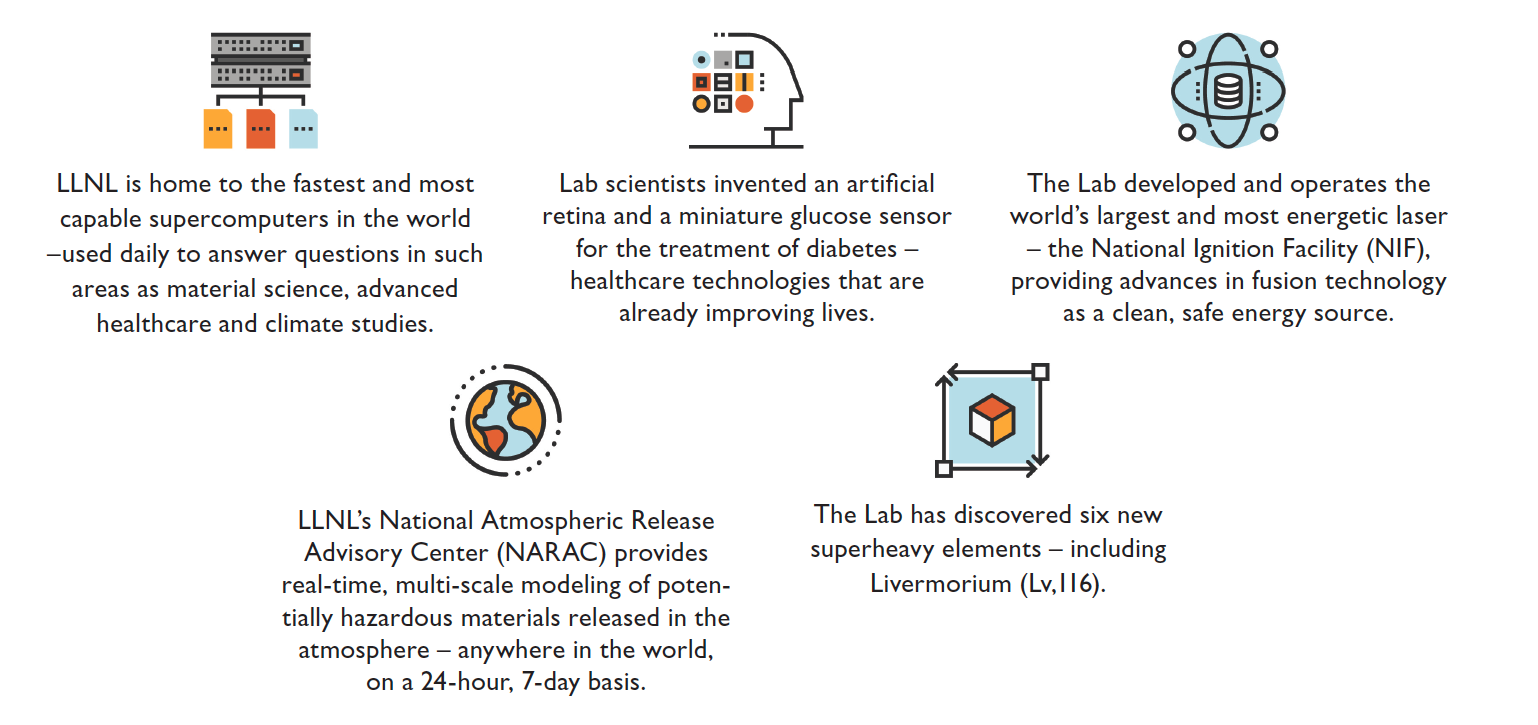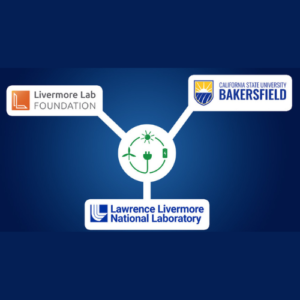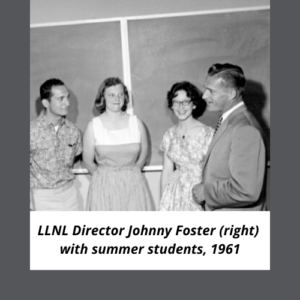Where Innovation Meets Impact
A Dynamic Partnership
About LLNL
Established in 1952, the Lawrence Livermore National Laboratory (LLNL) applies science and technology to make the world a safer place. As a national security laboratory, LLNL’s defining responsibility is ensuring the safety, security and reliability of the nation’s nuclear deterrent. The Laboratory’s science and engineering expertise, leading edge experimental capabilities, and world-class research are achieving breakthroughs to address some of society’s greatest challenges from cybersecurity to climate resilience.
Philanthropy Supports Science Solutions
'Big Science' is taking place at LLNL

With more than 1,100 Ph.D’s concentrated in one square mile,
LLNL scientists and engineers are changing the world, daily.
Take a Virtual Tour of LLNL
70 Years of LLNL History
LLNL's National Ignition Facility (NIF) Achieved Fusion Ignition
News Featuring LLNL & LLF

Local Leaders Named to Livermore Lab Foundation Board of Directors
Long-time community leader Lori Souza and University of California National Laboratories (UCNL) management executive June Yu have joined the board of directors of the Livermore Lab Foundation (LLF), effective January 2024.

Just Released: Roads to Removal
A first-of-its-kind national scale analysis, outlining pathways for carbon dioxide (CO2) removal to help the U.S. reach its climate goals.

LLF, LLNL, & CSUB Working to Advance Clean Energy
In September 2023, LLF, LLNL, and California State University Bakersfield (CSUB) signed a MOU agreement to collaborate on advanced and clean-energy technologies, research opportunities and community partnerships that have the potential to shape the future of energy in the state and bring high-quality jobs to the region.

LLF & LLNL Awarded UC Climate Grant
Supported by a ~$1M grant from the University of California (UC), LLF is working with LLNL to scale up climate technology solutions and promote research, education, and entrepreneurship around the new carbon economy by investing in student fellows and innovative research teams.

LLF Funds New LLNL Climate Report
LLF is proud to support the new climate report ‘Sharing the Benefits’.

John S. Foster Jr. Undergraduate Fellowship
This month, LLF established the John S. Foster Undergraduate Fellowship to honor former Lab Director Dr. Johnny Foster, the fourth Director at LLNL.
